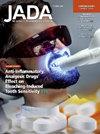等待头颈部放射治疗患者牙科筛查方案的比较分析。
IF 3.5
2区 医学
Q1 DENTISTRY, ORAL SURGERY & MEDICINE
引用次数: 0
摘要
背景:建议等待放射治疗(RT)的头颈癌(HNC)患者进行牙科评估并接受牙齿清除以减少并发症。作者旨在比较3个牙科筛查项目从RT咨询到牙齿清除的时间,以告知HNC患者等待RT的方案改进。方法:本回顾性研究纳入了等待RT的HNC患者,他们参加了3种牙科筛查方案中的1种:(1)内部牙科,(2)社区(CB)(外部)牙科,或(3)混合(外部牙医,由内部口腔医学专家审查记录)。收集的数据包括人口统计学特征、牙科筛查、干预措施和清除时间。描述性统计总结了人口学和临床特征。Wilcoxon秩和检验和Pearson相关系数评估清除时间差异。结果:281例患者中,62例参加了内部牙科项目,124例参加了CB牙科项目,95例参加了混合牙科项目。CB牙科计划的平均旅行距离最大(43.8英里),其次是混合计划(40.3英里)和内部牙科计划(30.9英里)(P = 0.61)。平均清除时间为:内部牙科项目28.6天,CB牙科项目22.6天,混合项目21.4天(P = .1959)。结论:混合方案,包括外部评价的口服药物审查,尽管旅行距离较远,但获得清除的时间最短,突出了混合模型的价值。实际意义:HNC放疗前及时的牙科筛查对于及时开始癌症治疗和减少继发性口腔并发症的风险至关重要。将口腔医学纳入HNC护理团队,确保快速、专业的牙科治疗,优化患者的治疗效果。本文章由计算机程序翻译,如有差异,请以英文原文为准。
Comparative analysis of dental screening programs for patients awaiting head and neck radiation therapy
Background
It is recommended that patients awaiting radiation therapy (RT) for head and neck cancer (HNC) undergo a dental evaluation and receive dental clearance to minimize complications. The authors aimed to compare the time from RT consultation to dental clearance across 3 dental screening programs to inform protocol improvements for patients awaiting RT for HNC.
Methods
This retrospective study included patients with HNC awaiting RT who participated in 1 of 3 dental screening programs: (1) in-house dental, (2) community-based (CB) (outside) dental, or (3) mixed (outside dentist with records reviewed by an in-house oral medicine specialist). Data collected included demographic characteristics, dental screenings, interventions, and time to clearance. Descriptive statistics summarized demographic and clinical characteristics. Wilcoxon rank-sum tests and Pearson correlation coefficients evaluated clearance time differences.
Results
Among 281 patients, 62 participated in the in-house dental program, 124 in the CB dental program, and 95 in the mixed program. Mean travel distance was greatest for the CB dental program (43.8 miles), followed by the mixed (40.3 miles) and in-house dental (30.9 miles) programs (P = .61). Mean times to clearance were 28.6 days for the in-house dental program, 22.6 days for the CB dental program, and 21.4 days for the mixed program (P = .1959).
Conclusions
The mixed program, incorporating an oral medicine review of outside evaluations, had the shortest time to clearance, despite greater travel distances, highlighting the value of hybrid models.
Practical Implications
Timely dental screenings before RT for HNC are critical to initiate cancer treatment promptly and minimize the risk of developing secondary oral complications. Integrating oral medicine into the HNC care team ensures rapid, specialized dental treatment, optimizing patient outcomes.
求助全文
通过发布文献求助,成功后即可免费获取论文全文。
去求助
来源期刊

Journal of the American Dental Association
医学-牙科与口腔外科
CiteScore
5.30
自引率
10.30%
发文量
221
审稿时长
34 days
期刊介绍:
There is not a single source or solution to help dentists in their quest for lifelong learning, improving dental practice, and dental well-being. JADA+, along with The Journal of the American Dental Association, is striving to do just that, bringing together practical content covering dentistry topics and procedures to help dentists—both general dentists and specialists—provide better patient care and improve oral health and well-being. This is a work in progress; as we add more content, covering more topics of interest, it will continue to expand, becoming an ever-more essential source of oral health knowledge.
 求助内容:
求助内容: 应助结果提醒方式:
应助结果提醒方式:


